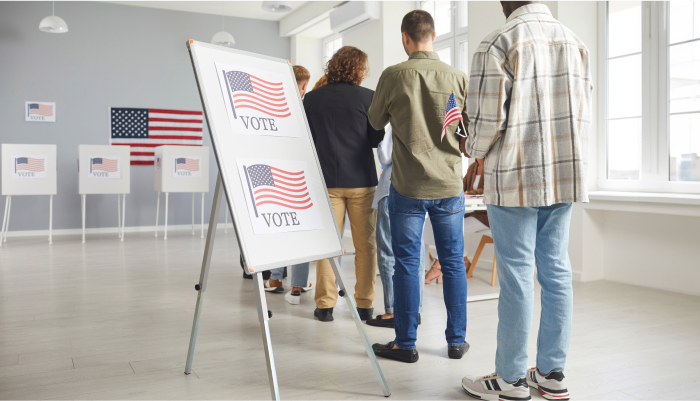3-minute read
Election season is, thankfully, drawing to a close. And while you may be exhausted from the rancorous back and forth, wellness managers can put certain political campaign techniques to good use.
Set an Election Day
Every wellness program strategic goal should have its own election day — when you determine how you fared with constituents; some will be annual, while others will be longer term. Just as in politics, there’s much to learn from reaching the goal or falling short. Take time soon after your election day to capture lessons before you move forward.
Grease the Skids
The easiest way to engender support is to thank people for participating. Just as savvy politicians follow up with social media shout-outs, text messages, phone calls, and handwritten notes to campaign workers, wellness managers need to reach out personally to participants.
Get Your Message Out
Successful politicians aren’t shy about repeating their message, over and over. Wellness pros have a tendency to believe that sharing their vision once or twice means the population they serve actually knows it. That’s not true. Decide your main message — well-being, productivity enhancement, valued benefit — then repeat it often, backed with supporting data from opinion surveys and program evaluations.
Behave Like the Challenger
Although there’s no apparent “opponent,” don’t be lulled into believing you’re an incumbent for life, no matter how successful you are today. The next CEO, new competition, or rise in energy prices could be a threat to your program. Continue to build the business case for wellness with successful services so you can weather any change in your organization’s priorities.
Shake Hands and Kiss Babies
There’s an unfortunate side effect of portal-centric wellness: Many well-being managers are less visible than they should be. People may know your name, but haven’t met you or had a conversation. When it comes time for a vote of confidence — like supporting the wellness program when benefits are being squeezed — it’s a lot easier to vote against the function without a face.
Get the Easy Votes
Managers sometimes obsess over reaching the hard to reach, to the detriment of reaching the easy to reach. Establish a strong base by designing and marketing your services first to those most likely to participate. Once you’ve got a firm base you can go after the undecideds. And don’t waste time on the hard opposition (those who think your program just squanders resources). You’ll never change their minds; don’t spend energy you could use to expand your base.
Prepare for the Debate
Share regular presentations/reports on your program’s success — and prepare, just like the candidates. Do your homework, have the facts plus figures at your fingertips, anticipate the inevitable naysayer (the person in the audience who’s just looking for a chink in your armor), and practice. You want to be as confident in your delivery as you are in your record of achievement.
Build a Diverse Coalition
Just as successful politicians want voters from different backgrounds, wellness managers need a diverse base of support. Make sure your program and messaging are inclusive and accessible to employees with different physical abilities, work schedules, and cultural backgrounds. By engaging a wider range of participants, you’ll create a more robust, resilient wellness program.
Leverage Social Media
Savvy politicians use social media to connect with voters, share their message, and mobilize supporters. Do the same to engage with employees, share successes, and promote wellness initiatives. Platforms like Facebook, X, and Instagram can create a sense of community and build momentum for your wellness program.
Emphasize Local Impact
Political candidates often focus on how their policies will benefit local communities. Similarly, wellness managers should highlight their program’s positive impact on the workplace community. Showcase stories and testimonials of employees who’ve adopted healthier habits, increased productivity, and enhanced well-being through your offerings. By demonstrating real-world impact, you’ll inspire employees to invest in their own health and rally support for your efforts.

Dean Witherspoon
Chief collaborator, nudger, tinkerer; leads the most inventive team creating well-being and sustainable living programs. Reach out if you’d like to talk about employee well-being, emotional fitness, or eco-friendly living.




